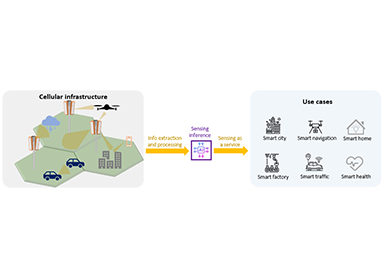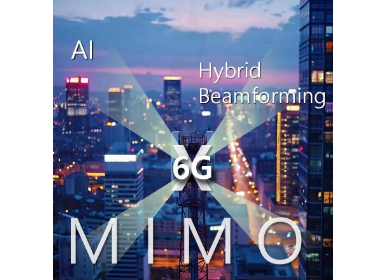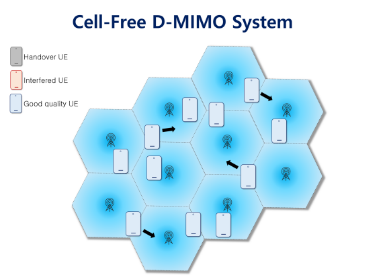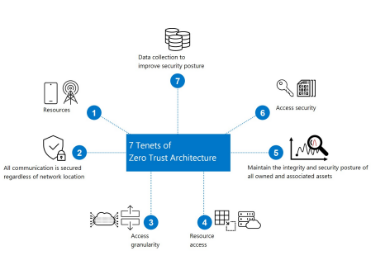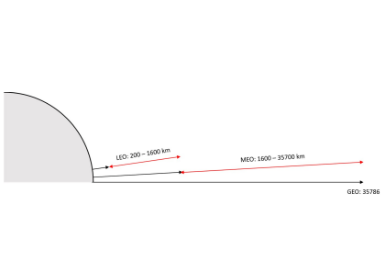Communications
Energy Saving for 6G Network: Part I
Introduction
Mobile operators and infrastructure vendors face growing pressure to reduce network energy consumption due to environmental regulations, rising operational costs, and sustainability initiatives. With wireless infrastructure accounting for the majority of power consumption in mobile networks, designs of wireless infrastructure need to increasingly emphasize energy savings at both the network and the device. In Recommendation ITU-R M.2160 “IMT-2030 (6G) Framework” [1], sustainability is considered as a foundational aspiration of future International Mobile Telecommunications (IMT) systems: “6G is expected to help address the need for increased environmental, social, and economic sustainability, and also support the goals of the Paris Agreement of the United Nations Framework Convention on Climate Change. IMT-2030 implementations are expected to be designed to achieve the least possible environmental impact and to use resources efficiently by minimizing power consumption, using energy efficiently and reducing greenhouse gas emissions, …, IMT-2030 may allow for efficient deployments and operation, thereby improving both environmental sustainability and the affordability necessary to support social sustainability.” With this, the transition from 5G to 6G needs to not only introduce faster speeds and greater capacity, but also a foundational shift toward sustainable, energy-efficient mobile networks.
6G presents a unique opportunity to design energy-efficiency into the system from day one [2]. While energy savings were a significant focus in the development of 5G networks, which was not a primary consideration from the outset. Nevertheless, numerous energy-saving features have been integrated into 5G systems to optimize power usage. Energy Saving architecture outlines a comprehensive roadmap for achieving 30% or more power reduction compared to 5G.
Energy Saving Features in 3GPP 5G NR
5G NR introduced several energy-saving features designed to reduce the power consumption of both user equipment (UE) and base station (BS). While these innovations provided significant improvements compared to 4G LTE, limitations exist as some features were not introduced from the beginning of 5G NR and fragmented throughout the 5G NR enhancements.
To enhance UE power efficiency, 5G introduced specific low-power modes, such as the RRC_INACTIVE state, tailored to individual devices. Furthermore, Idle Mode Signaling Reduction was implemented to minimize the need for frequent signaling when UEs are inactive, reducing overall energy consumption. Building on these advancements, Discontinuous Reception (DRX) adopted as one of key features, allowing UEs to power down their receivers during idle periods. 5G introduced both short and long DRX cycles to strike a balance between latency and energy efficiency. Complementing DRX, Discontinuous Transmission (DTX) enables BSs to skip transmissions during periods of low or no traffic, further conserving energy. Additionally, Carrier Aggregation allows for the selective activation or deactivation of secondary carriers, optimizing energy use by ensuring resources are only utilized when necessary. Together, these mechanisms collectively contribute to significant improvements in energy efficiency across 5G networks.
While these features have improved energy efficiency in 5G networks, ongoing advancements are necessary to address remaining limitations and achieve even greater sustainability in future network generations. Later releases of 5G further strengthened energy-saving capabilities.
• Enabled dynamic transmission control of synchronization signals and broadcast channel (SSB), including adaptation of the SSB transmission periodicity, based on cell load conditions.
• Introduced On-Demand SIB1 (OD-SIB1) transmission, allowing system information to be broadcast only when necessary. This eliminated the need for continuous SIB1 broadcast in idle networks.
• Implemented network energy saving techniques like cell switch-off and micro-sleep for base stations, suitable for low traffic scenarios.
• Improved RRC_INACTIVE mobility handling to minimize state transitions and signaling.
• Introduced channel measurement of partial antenna port to minimize active antenna ports for connected UEs.
• Enabled PRACH resource allocation, allowing configurations of PRACH occasions to be sparse or denser depending on traffic load.
• Enabled bandwidth part (BWP) operation, allowing UEs to operate within a configured bandwidth to save energy.
• Introduced dynamic control of PDCCH monitoring, including search space set group (SSSG) switching and PDCCH skipping, to adapt the PDCCH monitoring in according to traffic.
• Enhanced carrier aggregation with secondary cell (SCell) dormancy, allowing reduction of UE operation on the SCell with low traffic.
• Introduced low-power-receiver with significantly lower processing power than the legacy 5G receiver, allowing a UE to operate with the low-power-receiver for energy saving and to wake up the legacy 5G receiver when needed.
Despite these advancements, structural limitations such as frequent SSB bursts and persistent antenna activation remained unresolved, creating the need for a more fundamental redesign in 6G. Key limitations of 5G energy-saving mechanisms include the fact that many components of the network remained in an always-on state due to coverage and mobility requirements, or due to the need to serve legacy UEs that do not support enhancements for energy savings that were introduced in later releases. Frequent periodic SSB transmission, typically occurring every 20ms, prevents base stations from entering deep sleep modes, further hindering energy efficiency. Additionally, all antenna ports often remain active even during low traffic periods, limiting the potential for significant power reduction. Further, no meaningful mechanisms for network energy savings are supported when traffic on a cell is not low/none. These inherent constraints highlight the necessity for more aggressive and innovative energy-saving strategies in the design of 6G networks.
Design Principles of 6G Energy Saving
In contrast to incremental energy-saving add-ons in 5G, 6G reimagines the air interface, network structure, and signaling behavior from the ground up. The guiding philosophy of 6G energy saving is built on the principle of "Less ON, More OFF", that is a systematic reduction of transmission and reception activities through context-aware, on-demand signaling [3].

Figure 1. Design principles for 6G Energy Saving
In 6G, energy efficiency is not treated as a supplementary feature but as a foundational design objective. We identified three key enablers that drive network-wide energy savings through a unified and adaptive architecture (Figure 1):
1. Carrier-dependent capabilities and characteristics
In the 6G green network vision, carriers are divided into distinct layers: low-frequency carriers handle synchronization, paging, and control with minimal frequency, while high-frequency carriers manage bursty data with energy-efficient, quick on/off control. This differentiation optimizes spectrum use and dynamically deactivates unused resources. Most functionalities exist in 5G except for SSB period adaptation, delaying the real-world deployment of this energy-saving network access (ENA).
6G ENA dynamically adjusts the transmission periodicity and transmission occasion of Synchronization Signal Blocks (SSBs) based on network load conditions. In low-traffic or idle scenarios, SSB transmissions can be muted or less frequent, enabling deeper sleep states for base stations. This approach significantly reduces unnecessary broadcast activity, unlike 5G's rigid always-on SSB transmission.
One of the key enablers in this architecture is the multi-type Synchronization Signal Block (SSB), which can have three types: Normal (NM-SSB), Energy-Saving (ES-SSB), and On-Demand (OD-SSB). While NM-SSB operates as in 5G, ES-SSB allows for much longer periodicity (e.g., 160ms), substantially reducing standby energy, and OD-SSB is transmitted only when the network needed, enabling highly efficient measurements.
2. Less ON and more OFF with time/frequency/spatial/power adaptation
Dynamic spatial and power adaptation is central to 6G energy savings strategy for the connected UEs. By actively adjusting the number of transmit antennas and their beam directions based on current traffic demands, the system avoids over-provisioning and reduces idle energy usage.
Especially, dynamic spatial adaptation (DSA) optimizes the spatial domain by dynamically adjusting the number of active transmit antenna ports and beam directions according to real-time traffic demand. By scaling down antenna usage, the system can avoid excessive power consumption associated with full-array MIMO operations. This technique is particularly effective for high-frequency bands where power usage scales with antenna density.
3. Network-aware management and exposure
Energy-aware network function (EANF) continuously monitors the power consumption status of the network and applies real-time policies for power-aware scheduling and resource control. It enables intelligent decisions on carrier activation, transmission scheduling, and load balancing based on energy metrics. EANF serves as the orchestration layer for integrating energy-saving intelligence across the RAN and core network.
Beyond these features, 6G integrates AI as a core engine for energy efficiency. Through AI-RAN, the network can infer optimal beam configurations, compress CSI feedback, and predict traffic behavior, all of which contribute to reduce signaling overhead and intelligent control. AI also replaces periodic measurements with event-driven decisions, allowing both UEs and BSs to sleep more often without compromising performance.
The design of power-saving mechanisms for UE in 6G networks is also a critical area of innovation, driven by the need to enhance energy efficiency while maintaining high performance and connectivity. One of the core design principles revolves around the concept of network-UE joint power saving, which emphasizes collaboration between the network and the UE to optimize energy consumption dynamically. This approach leverages the network's ability to predict UE behavior, traffic patterns, and environmental conditions to proactively manage power-saving strategies, ensuring that UEs can operate efficiently without compromising user experience.
A key innovation in this domain is the introduction of advanced wake-up signal mechanisms. Traditional wake-up signals have limitations in terms of granularity, latency, and adaptability, which can hinder effective power saving. In 6G, wake-up signals must evolve to become more intelligent and context-aware, enabling precise control over UE activation and deactivation. This involves the development of ultra-low-power wake-up receivers capable of detecting signals with minimal energy overhead, as well as the integration of machine learning algorithms to predict optimal wake-up times based on user behavior and network conditions.
The joint optimization between the network and UE is essential for achieving significant power savings. For instance, the network can dynamically adjust wake-up intervals and signal parameters based on real-time data, such as traffic load, user activity, and battery levels. This collaborative approach ensures that UEs are only active when necessary, reducing idle power consumption.
In Figure 2, the relative energy saving gain is shown versus the user perceived throughput gain relative to the network traffic load. For the evaluation, the daily traffic load shown in the most right has been used.

Figure 2. Energy Saving Gain
The central objective of the 6G energy-saving design is to achieve significant reductions in network energy consumption without compromising service quality. This is possible through the combined application of key enabling technologies; specifically, ENA and DSA. These features are designed to reduce transmission activity in both time and spatial domains, allowing the network to operate in a more energy-conscious and adaptive manner.
Our internal evaluations using realistic 24-hour traffic profiles show the clear benefits of this method. By selectively cutting active SSB transmissions according to traffic load, ENA achieves a reduction of 43.37% for low traffic and a decrease of 20.3% in average energy saving gain. DSA, by dynamically reducing the number of active antenna ports based on traffic demand, achieves an additional 14.4% power reduction. With DSA, antennas can be turned off for low- to medium-traffic loads if UPT levels are maintained as in high traffic conditions. Combined, ENA and DSA provide about a 21.2% total energy saving, showcasing the complementary nature of time- and space-domain energy control. In addition to cutting energy use, these methods improve system performance in high-load scenarios. Our simulations reveal that the ENA+DSA framework boosts user-perceived throughput (UPT) by up to 8.4% through more efficient resource use and reduced signaling overhead. These findings affirm that 6G energy-saving strategy is not merely about power reduction, but about intelligent resource orchestration. By enabling adaptive control over synchronization, transmission timing, and antenna activation, 6G provides a scalable and future-proof path to sustainability, while ensuring that performance and responsiveness to traffic are not sacrificed.
In totality, 6G energy saving vision is not a patch on existing designs but a paradigm shift—combining hardware flexibility, spectral agility, signaling redesign, and AI-native intelligence to deliver sustainable connectivity for the next decade and beyond. Together, these three enablers—ENA, DSA, and EANF—work in synergy to realize the philosophy of “Less ON, More OFF” by enabling both the base station and UE to transition more frequently into low-power states. They collectively represent a paradigm shift in physical and system-layer energy management that defines the 6G era.
Conclusion
The design principles of 6G energy saving focus on optimizing network resources through dynamic adaptation and intelligent control mechanisms. By leveraging techniques such as carrier separation, multi-type SSBs, dynamic spatial adaptation, and energy-aware network functions, 6G networks aim to achieve significant improvements in energy efficiency compared to previous generations. These advancements not only reduce power consumption but also enhance overall network performance and sustainability.
References
[1] Recommendation ITU-R M.2160-0, Framework and overall objectives of the future development of IMT for 2030 and beyond, Nov 2023
[2] RP-251881, New SID: Study on 6G Radio, NTT Docomo
[3] 6GWS-250036, Vision and Technologies for 6G Radio, Samsung

